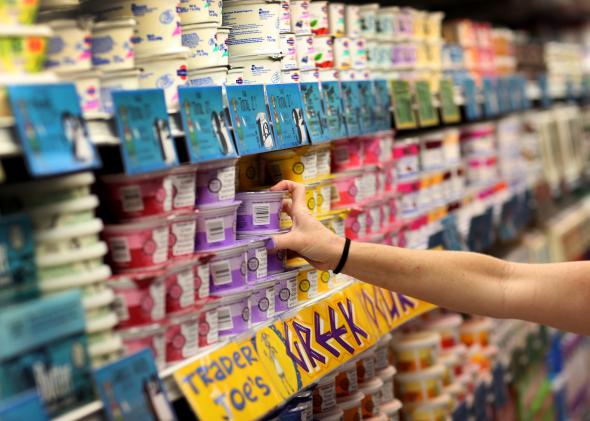Greek. Icelandic. French. Vietnamese. Why Are There So Many International Yogurts?

Photo by Joe Raedle/Getty Images
Stepping into the dairy aisle of my local grocery store has begun to feel a little like entering Epcot Center: Every country in the world is represented there. OK, maybe not every country, but many countries. There’s Greek yogurt, of course, which won American hearts and minds in the 2000s and whose rise has shown little sign of losing steam. Next came Icelandic yogurt, also known as skyr, followed by Australian yogurt and, more recently, “Asian yogurt.” (Asia is a big continent, and Tarté Asian Yogurt’s website clarifies that the product is based on “a popular style … that is commonly sold by street vendors and coffee shops all around Vietnam.”) In some stores you can find Bulgarian yogurt, and then there are the Swiss yogurts and French yogurts that now seem downright quaint in this brave new yogurt world.
This recent proliferation of international yogurts is puzzling. There are many specialty dishes that vary widely from country to country. Think about bread, for instance: You’d have no trouble describing the considerable differences among French baguettes, Indian naan, and Mexican tortillas. Nor would you deny that there are serious distinctions between miso soup and vichyssoise, or between spaghetti carbonara and pho.
But yogurt is not like bread, or soup, or noodles—there are really only so many ways you can vary yogurt, and none of them have an enormous impact on the final product. You can make it full-fat, low-fat, or nonfat, as American yogurt companies have been doing for years. You can strain it to remove the watery whey and make it thicker, as the Greeks and Icelanders do. You can use different kinds of sweeteners and flavorings: Siggi’s Icelandic yogurt is sweetened with agave nectar, Noosa Australian yogurt with honey, St. Benoit French yogurt with organic cane sugar, and Tarté Asian yogurt with stevia.
If you want to get really fastidious, you can use milk only from certain breeds of cattle—one brand uses only the output of Jersey and Guernsey cows—but at this point we’re talking about details most consumers aren’t going to notice. At the end of the day, yogurt is just fermented milk, with or without flavorings added to it. Anyone with milk, lactobacteria, and time can make it. Yogurt is one of the most consistent and ubiquitous foodstuffs in the world, and the differences among regional yogurt styles are among the least interesting and most pedantic culinary differences imaginable.
But even if you are for some reason fascinated by the contrasts between unstrained full-fat yogurt and strained fat-free yogurt, distinguishing brands by country still makes no sense. Can you correctly guess the actual place of origin of 7 common yogurts? Take our quiz and find out.
Correction, Aug. 15, 2014: Due to a production error, this quiz originally graded the seventh question incorrectly.
Correction, Aug. 18, 2014: The quiz also originally misspelled Siggi Hilmarsson’s last name.

